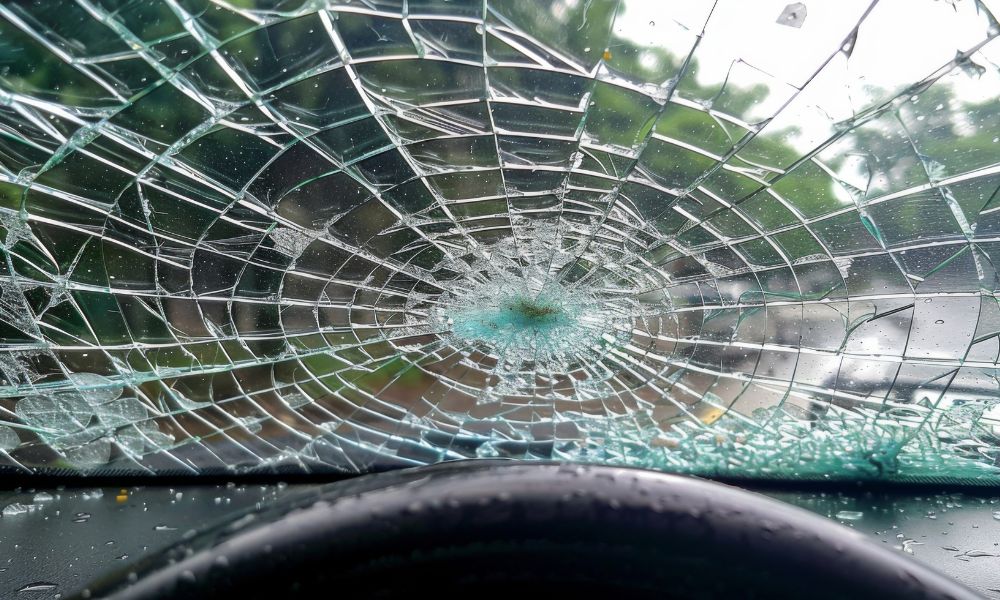Hailstorms, unpredictable and often severe, pose a significant threat to car owners worldwide. The sound of ice pellets hitting the metal surface of a vehicle isn’t just unsettling, though. It can lead to substantial financial and aesthetic damage. In this detailed post, we’ll discuss how to protect your car from hail damage and manage the aftermath of a storm.
Introduction to Hail Damage: The Impact on Cars and Wallets
Annually, hailstorms cost car owners millions of dollars in repair costs, often leaving behind dimpled exteriors that depreciate the vehicle’s value. Understanding the severity of such an event is crucial for taking appropriate precautions. Beyond the immediate visual and functional harm, hail damage can lead to higher insurance premiums and decreased market value. Therefore, it is crucial to have a plan of action in place beforehand.
Understanding Hail: What Causes It and Where It’s Most Common
Hail forms within strong thunderstorm clouds when updrafts carry raindrops upward into extremely cold areas of the atmosphere, freezing them. These frozen pellets can grow by colliding with supercooled water droplets that freeze upon contact, becoming heavy enough to fall as hail. Areas situated in what’s known as “Hail Alley”—notably parts of Colorado, Nebraska, and Wyoming—are prone to frequent and severe hailstorms, though they can occur almost anywhere under the right conditions. Staying informed about your geographical region’s risk of hailstorms can help you prepare adequately and take preventative measures.
How Bad Can Hail Damage Your Car?
The extent of hail damage can vary greatly depending on the storm’s severity and the hailstones’ size. Unfortunately, it doesn’t end there. Small hailstones might merely leave superficial marks, while larger ones can break windshields, dent bodywork, and destroy the paint finish. Here are some of the most significant things to watch for:
- Dents and dings: This is the most common type of hail damage, varying in size based on the hailstones’ impact.
- Cracked or shattered windshields and windows: Larger hailstones or a series of impacts can lead to cracks or complete breakage.
- Scratched paint: High-velocity hailstones can scratch a car’s paint, leading to further body damage if not addressed.
- Damaged lights: Headlights and taillights can crack or shatter from direct hail impacts.
- Compromised aerodynamics: Severe dimpling or panel damage can affect a vehicle’s aerodynamic efficiency, impacting fuel consumption and handling.
- Water leaks: Cracks in sealing around windows and sunroofs can lead to leaks during subsequent rain.
Keep in mind that even minor hail damage can significantly reduce a car’s market value.
Practical Tips for Protecting Your Car
Taking preventive measures can save you a great deal of time, money, and frustration in the long run. Below are some simple yet effective ways to protect your vehicle from hail damage:
1. Use a Garage or Carport
Having your car parked under cover is the best defense against hail. Whenever possible, use a garage or carport to shield your vehicle.
2. Invest in a Quality Car Cover
A padded or specially designed hail-proof car cover can offer significant protection against hail impacts if sheltered parking isn’t an option.
3. Regularly Check the Forecast
Keep an eye on the weather forecast, especially during seasons when hail is more common, to anticipate and prepare for storms.
4. Find Temporary Shelter
If you’re caught driving when a hailstorm hits, seek out temporary shelter, like under a gas station canopy or in a parking garage.
5. Use Blankets or Floor Mats
Cover your car with blankets or floor mats in a pinch. This method can offer some protection from smaller hailstones.
6. Take Advantage of the Latest Technologies
Modern technology, such as weather applications and alert systems, can provide real-time updates and warnings about impending severe weather, including hail.
7. Review Your Car Insurance Policy
Make sure your insurance policy includes coverage for hail damage and understand the particulars of making a claim.
8. Park Facing the Incoming Weather
When a storm is approaching, park your car with its front or back end facing the incoming weather, reducing the surface area exposed to hail.
9. Use Hail Protectors
Consider purchasing a hail protector system for your vehicle. These systems can inflate to provide a barrier against hail.
10. Apply Protective Film
Install a clear protective film on your car’s hood, roof, and trunk. This film can help prevent dents and scratches from smaller hailstones.
DIY Hail Damage Repair: Can You Fix It at Home?
You can sometimes remedy minor hail damage with DIY methods like dent repair kits or applying heat and cold alternately to pop out dents. However, these methods require patience and aren’t guaranteed to work—professional repairs might still be necessary. More severe damage, such as cracked or shattered windows, should always be left to professionals.
Finding the Best Business for Doing Repairs
When seeking a quality auto repair shop for hail damage, consider these key factors to ensure your vehicle receives the best care:
- Specialization and experience: Look for a shop that specializes in hail damage repair with an experienced team that understands the nuances of paintless dent removal (PDR) and other relevant techniques.
- Quality of reviews and references: Research the shop’s reputation through online reviews and ask for references. Positive feedback from previous customers can provide insight into the shop’s reliability and quality of work.
- Warranty and guarantee: A reputable shop will stand by the quality of their work by offering a warranty on their repairs. This can provide peace of mind that you’re investing in a repair meant to last.
- Insurance company recommendations: Often, insurance companies have a list of preferred providers known for their quality work in hail damage repairs. These recommendations can be a good starting point.
- Estimates and transparency: A trustworthy shop will provide a comprehensive and transparent estimate before beginning any work. This includes detailing the repairs needed and the associated costs, helping you avoid any unexpected expenses.
- Facility and equipment: The condition of the repair shop and the equipment used can also indicate the quality of work you can expect. A clean, well-organized shop with modern tools and technology is a good sign of professionalism and commitment to excellence.
Choosing the right auto repair shop is crucial for restoring your vehicle to its pre-damage condition while maintaining its value and safety. Taking the time to find a shop that meets these criteria can save you time and money in the long run.
Insurance and Hail Damage: Understanding Coverage and the Claims Process
Comprehensive car insurance typically covers hail damage. After the storm, document the damage thoroughly and contact your insurer promptly. Navigating the claims process with documentation and an understanding of your policy limits will streamline repair approvals and fund allocation. Be aware that filing a claim for hail damage might affect your future premiums, so consider the extent of the damage and your policy’s deductible before making a decision.
Ensure You Have a Trusted Auto Restoration Partner
Protecting your vehicle from hail involves equal parts preparation and swift action. Luckily, the best partners for addressing issues such as mobile windshield replacement are just a phone call away.
By understanding the phenomenon of hail and taking proactive steps to protect your car from damage, you can significantly reduce the financial risk. While no method is foolproof, combining innovative technologies and traditional protection measures can provide a strong defense against these unpredictable storms.



Recent Comments